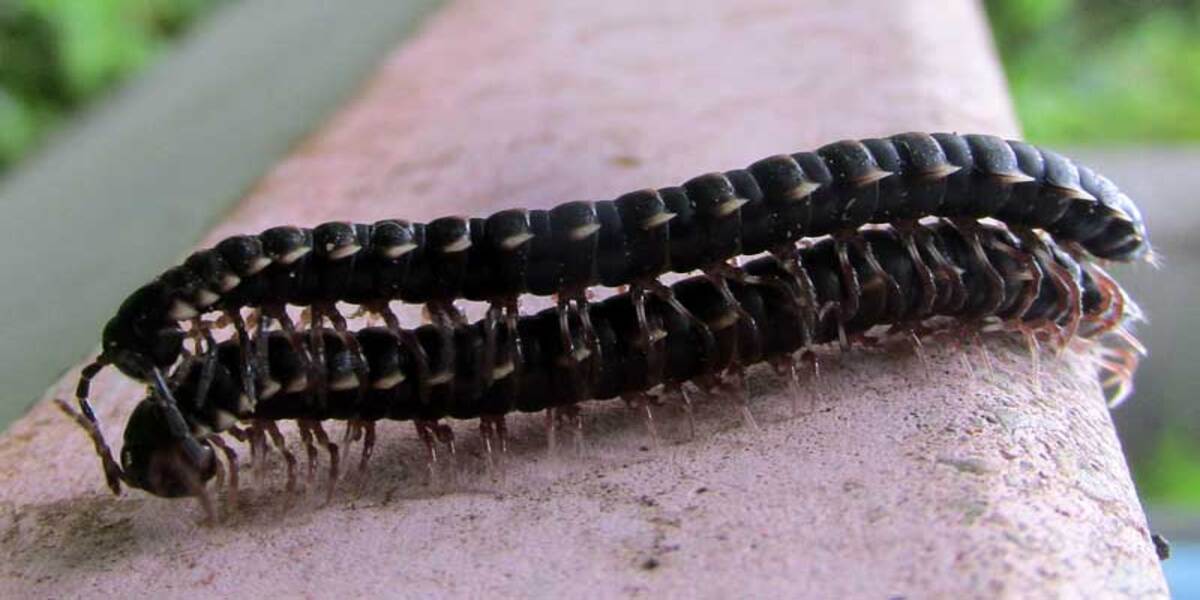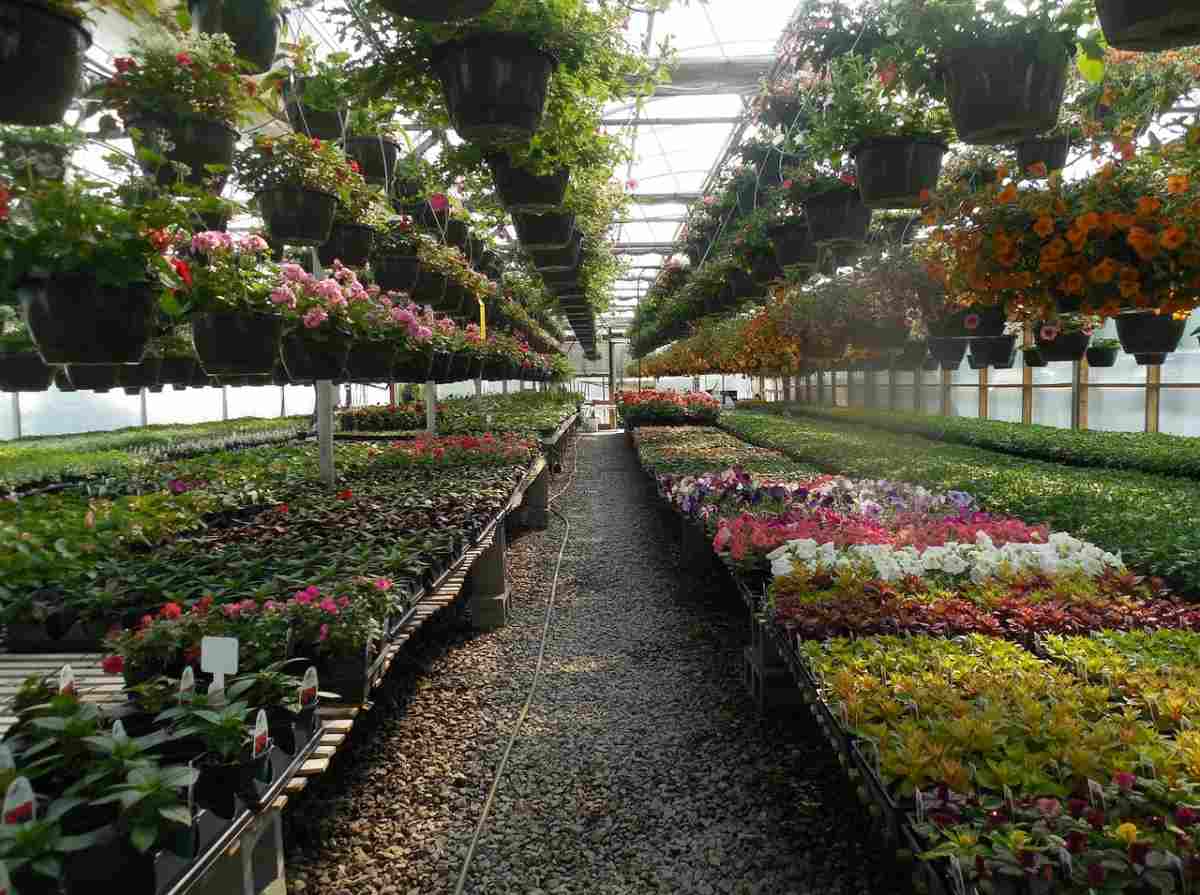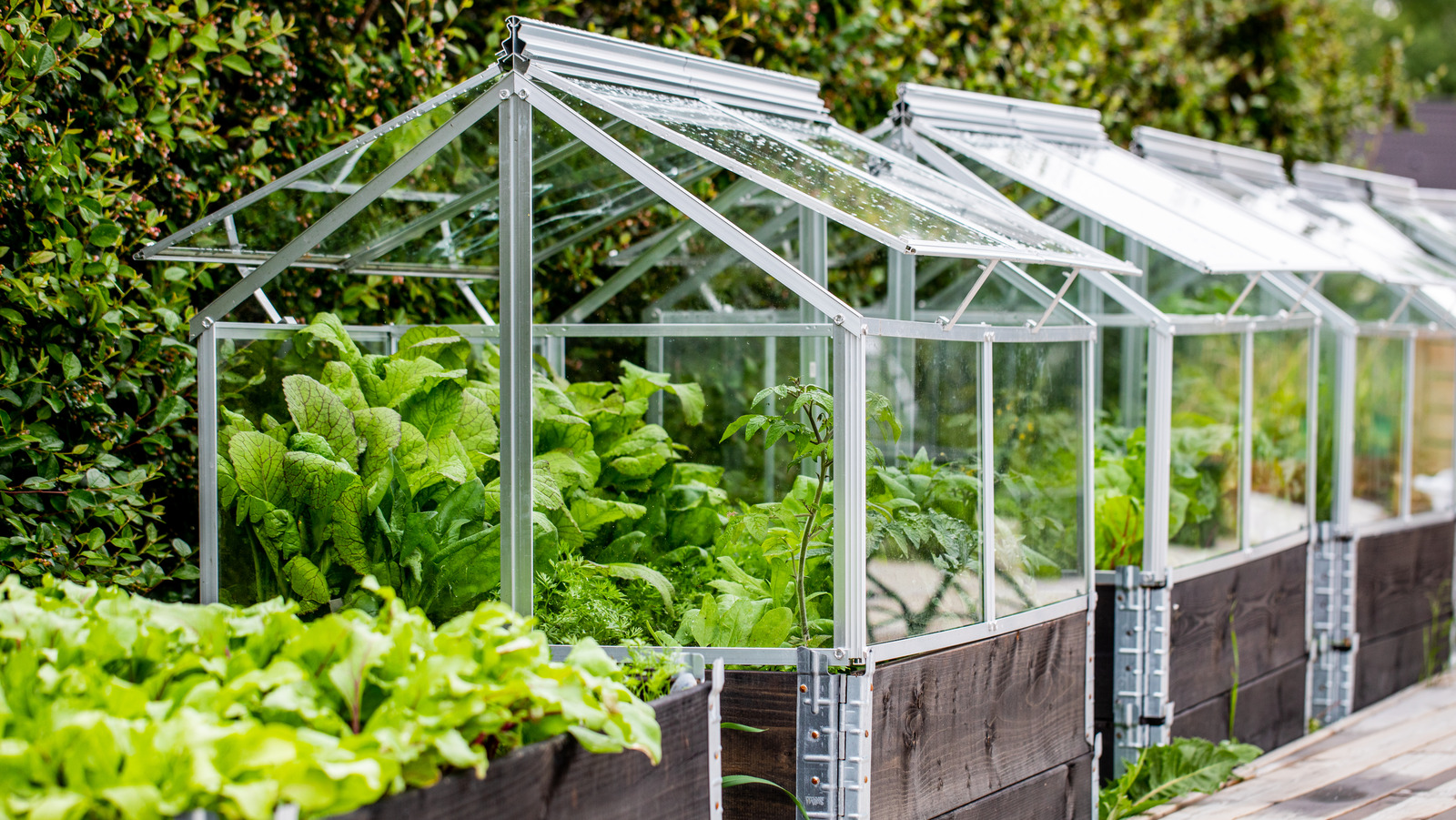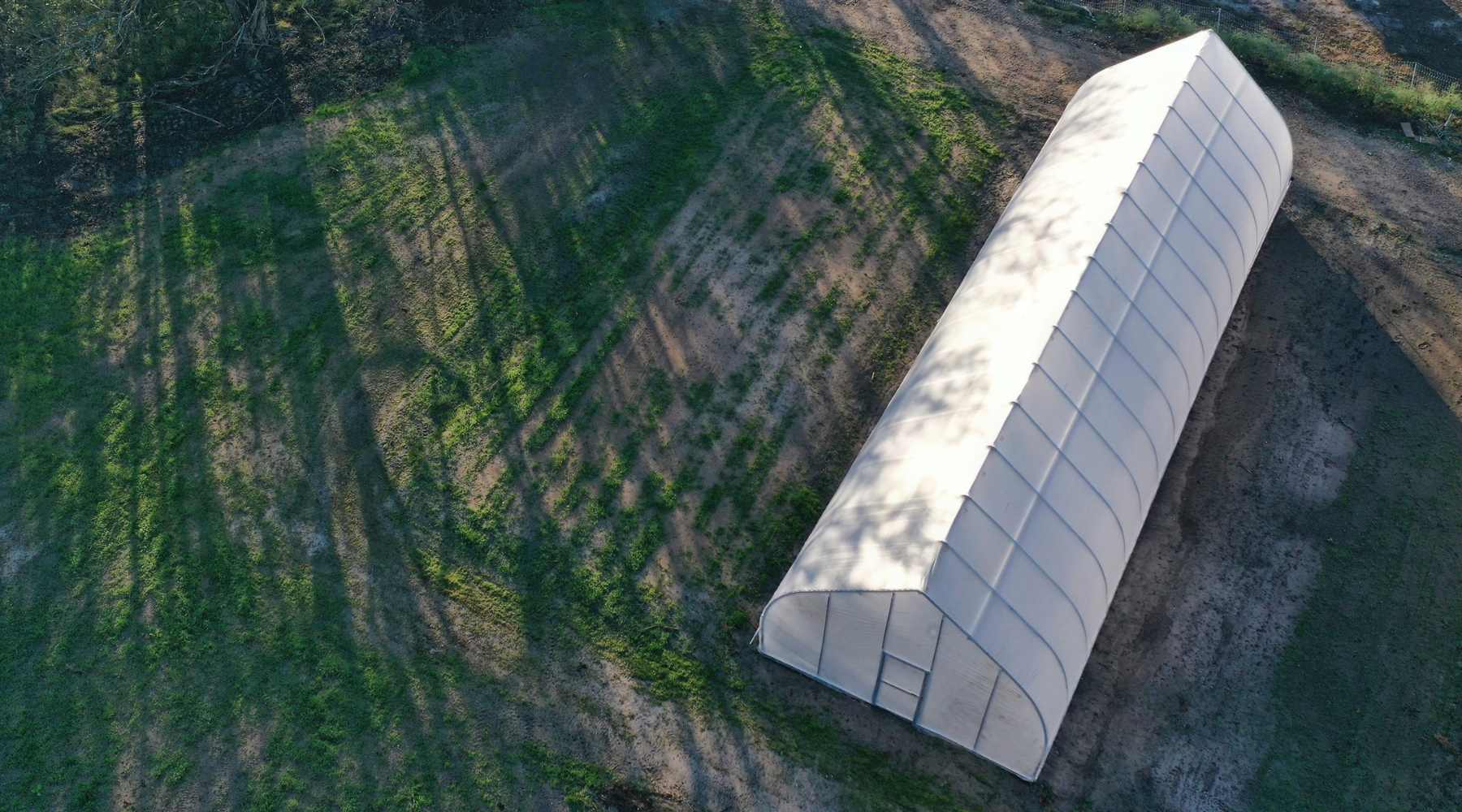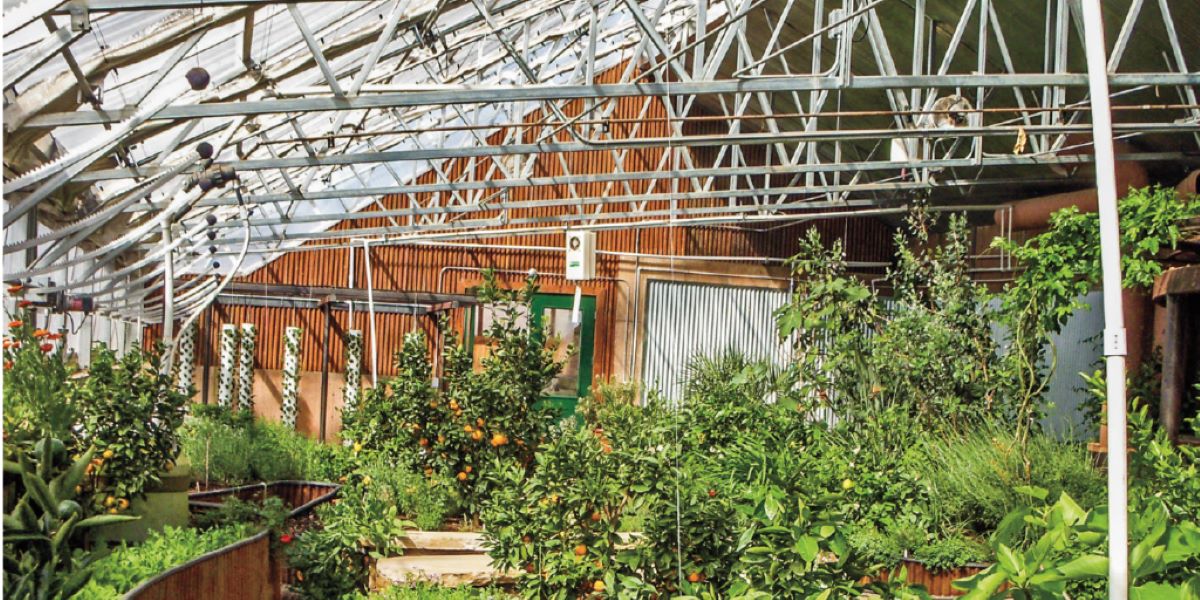Home>Gardening Basics>What Is A Greenhouse For


Gardening Basics
What Is A Greenhouse For
Modified: January 22, 2024
Learn all about getting started with greenhouses and discover their benefits for gardening and cultivating plants. Find out how to create your own greenhouse for a thriving garden.
(Many of the links in this article redirect to a specific reviewed product. Your purchase of these products through affiliate links helps to generate commission for Chicagolandgardening.com, at no extra cost. Learn more)
Table of Contents
Introduction
Welcome to the world of greenhouses! If you’ve ever wondered how plants are grown in a controlled environment or dreamt of having your own little piece of garden heaven, then you’re in the right place. Greenhouses have been used for centuries to create the optimal conditions for plant growth, and they continue to be an important tool for gardeners, horticulturists, and even commercial growers.
What exactly is a greenhouse, you may ask? Simply put, a greenhouse is a structure designed to provide plants with a conducive environment to thrive. It acts as a shield, protecting plants from harsh weather conditions while providing them with the necessary warmth, light, and moisture they need to grow.
Greenhouses come in all shapes and sizes, from small backyard structures to large commercial operations. They can be made from various materials, such as glass, plastic, or polycarbonate, and their designs can range from simple to complex, depending on the needs of the plants and the gardener.
In this article, we will explore the different types of greenhouses, the components that make up a greenhouse, the benefits of using one, and the factors to consider when building or buying a greenhouse. We will also discuss some common plants that thrive in greenhouses and provide tips for maintaining and caring for your greenhouse.
Whether you’re a seasoned gardener looking to expand your growing capabilities or a beginner eager to dip your toes into the world of plant cultivation, this article will serve as your comprehensive guide to getting started with greenhouses.
So, grab your gardening gloves and let’s dive into the fascinating world of greenhouses!
Definition of a Greenhouse
A greenhouse is a specially designed structure used to create an ideal environment for plant growth. It provides a controlled space where plants can thrive, regardless of external weather conditions.
The primary function of a greenhouse is to trap and retain heat from the sun, creating a warmer microclimate inside compared to the outside temperature. This is achieved through the use of materials that allow sunlight to enter, such as glass or transparent plastic, while minimizing heat loss. The captured heat is then retained within the structure, creating a warm and stable environment for plants.
One of the defining features of a greenhouse is its ability to regulate temperature and humidity levels. This is achieved through ventilation systems, shading devices, and the use of artificial heating or cooling methods. By carefully controlling these factors, gardeners can ensure that plants have optimal growing conditions throughout the year.
Greenhouses also provide protection from extreme weather events, such as frost, hail, heavy rain, or strong winds, which can damage or destroy plants. The structure acts as a physical barrier, shielding plants from these elements and minimizing the risk of crop loss.
In addition to temperature and weather control, greenhouses offer a controlled environment for pest and disease management. The enclosed space makes it easier to monitor and control infestations, reducing the need for chemical pesticides and promoting healthier plant growth.
Overall, a greenhouse serves as a sanctuary for plants, offering protection, a favorable growing environment, and increased opportunities for year-round cultivation. It is a valuable tool for gardeners, allowing them to extend growing seasons, experiment with different plant varieties, and cultivate plants that may not thrive in their local climate.
Now that we have a clear understanding of what a greenhouse is and its purpose, let’s explore the key components and structure of a greenhouse in the next section.
Purpose of a Greenhouse
The purpose of a greenhouse extends far beyond simply providing a shelter for plants. Greenhouses serve several key functions that make them an invaluable asset for gardeners and horticulturists alike.
1. Extended growing season: One of the main advantages of a greenhouse is its ability to extend the growing season. By creating a controlled environment, gardeners can start planting earlier in the spring and continue growing crops well into the fall or even winter, depending on the region. This allows for a longer harvest period and the opportunity to cultivate a wider range of plant species.
2. Protection from harsh weather: Greenhouses act as a shield against extreme weather conditions, offering protection from frost, hail, heavy rain, strong winds, and temperature fluctuations. These adverse weather events can cause significant damage to plants, but with a greenhouse, growers can minimize the risk and ensure the survival of their crops.
3. Improved plant growth: The controlled environment in a greenhouse provides optimal conditions for plant growth. The ability to regulate temperature, humidity, and light levels allows gardeners to create the ideal environment for specific plants. This encourages faster growth, increased yields, and improved overall plant health.
4. Year-round cultivation: Greenhouses enable year-round cultivation, regardless of the external climate. This opens up opportunities for growing out-of-season fruits, vegetables, and flowers, satisfying the demand for fresh produce even during colder months. It also allows for the cultivation of exotic or delicate plants that require consistent warmth and protection from harsh elements.
5. Propagation and seed starting: Greenhouses provide an excellent environment for seed germination and propagation. The controlled conditions foster optimal root development, leading to healthier and more robust seedlings. By starting seeds in a greenhouse, gardeners can get a head start on the growing season and produce a larger quantity of healthy plants.
6. Experimentation and plant variety: Greenhouses offer the opportunity to experiment with different plant varieties that may not thrive in the local climate. By creating customized growing conditions, gardeners can test out unique or exotic plants, explore new crop varieties, and engage in plant breeding and hybridization.
7. Research and education: Greenhouses play a crucial role in scientific research, horticultural studies, and educational institutions. They provide controlled environments for studying plant physiology, conducting experiments, and teaching future generations about plant growth and cultivation techniques.
Overall, the purpose of a greenhouse is to provide a controlled and protected space where plants can thrive, offering a longer growing season, increased crop yield, and the ability to grow a wider range of plant species. In the next section, we will delve into the structure and components of a greenhouse.
Structure and Components of a Greenhouse
A greenhouse consists of several key components that work together to create a suitable environment for plant growth. Understanding the structure and components of a greenhouse is essential for building or selecting the right one for your gardening needs.
1. Frame: The frame is the structure that provides support and stability to the greenhouse. It can be made of various materials, including aluminum, wood, or galvanized steel. The choice of material depends on factors such as budget, durability, and desired aesthetics.
2. Covering: The covering is the transparent material that allows sunlight to enter the greenhouse while retaining heat. Common options include glass, polyethylene plastic, or polycarbonate panels. Each material has its advantages and considerations, such as insulation properties, durability, and light transmission.
3. Flooring: The flooring options for a greenhouse include bare soil, gravel, pavers, or concrete. The choice depends on personal preference, ease of maintenance, and the type of plants being grown. Some gardeners may opt for raised beds or containers for better control over soil quality and drainage.
4. Ventilation: Adequate ventilation is crucial to regulate temperature, humidity, and air circulation inside the greenhouse. Ventilation can be achieved through windows, vents, or exhaust fans. The proper exchange of air helps prevent overheating, condensation, and the spread of diseases.
5. Shading: Shading is essential to prevent excessive heat buildup inside the greenhouse. This can be achieved through shading cloth, shading paint, or shade netting. Controlling the amount of sunlight that enters the greenhouse helps prevent sunburn and heat stress in plants.
6. Heating and cooling systems: Depending on the climate and the type of plants being grown, heating and cooling systems may be necessary to maintain optimal temperature conditions. Common options include electric heaters, forced-air systems, evaporative cooling, or even geothermal heating.
7. Irrigation: Proper irrigation is essential for providing plants with the necessary water. This can be accomplished through manual watering or using automated irrigation systems, such as drip irrigation or overhead sprinklers. Consistent and efficient watering practices help promote healthy plant growth.
8. Benching and shelving: Benching and shelving provide elevated surfaces for plants, allowing for better organization, maximizing space usage, and facilitating easier access for plant care. They can be made from a variety of materials, such as wood, metal, or plastic.
9. Environmental controls: In more advanced greenhouses, environmental control systems are used to automate and monitor various parameters such as temperature, humidity, CO2 levels, and lighting. These systems can be set up to maintain optimal growing conditions based on the specific needs of the plants.
Each component of a greenhouse plays a vital role in creating an environment that supports plant growth. By understanding these key components, you can choose or build a greenhouse that suits your gardening goals and provides the ideal conditions for your plants. In the next section, we will explore the different types of greenhouses available.
Types of Greenhouses
Greenhouses come in various types, each with its own unique design and functionality. The choice of greenhouse type depends on factors such as available space, budget, climate, and the specific plants being grown. Let’s explore some common types of greenhouses:
1. Lean-to greenhouse: A lean-to greenhouse is built against an existing structure, such as a wall or a house. It is an excellent option for limited space and provides easy access to utilities. This type of greenhouse benefits from the heat and shelter of the existing structure, making it more energy-efficient.
2. Freestanding greenhouse: A freestanding greenhouse is a standalone structure that is not attached to any existing building. It offers more flexibility in terms of size and design options. Freestanding greenhouses can be placed anywhere on a property and are often preferred by commercial growers or individuals with ample space for gardening.
3. Hoop house: A hoop house, also known as a tunnel greenhouse, has a simple arched shape with a metal or PVC pipe framework covered with plastic. This type of greenhouse is relatively easy to assemble and is cost-effective. Hoop houses are ideal for seasonal crops and can be easily moved or modified as needed.
4. Glass greenhouse: Glass greenhouses have traditional and elegant aesthetics. They are constructed with a metal frame and glass panels that provide excellent light transmission. Glass greenhouses offer better insulation properties and durability compared to other materials. They are commonly used in commercial operations or for enthusiasts who prioritize aesthetics.
5. Plastic greenhouse: Plastic greenhouses are constructed with a metal or PVC frame covered by polyethylene or polycarbonate panels. They are lightweight, cost-effective, and easy to assemble. Plastic greenhouses provide good light transmission while offering insulation and weather resistance. They are popular among beginner gardeners or those on a budget.
6. Multi-span greenhouse: A multi-span greenhouse is designed with multiple bays or sections connected by a common framework. This type of greenhouse allows for more efficient use of space and greater flexibility in terms of plant variety and management. Multi-span greenhouses are commonly used in commercial operations or by experienced gardeners with larger-scale growing needs.
7. Greenhouse kits: Greenhouse kits are pre-made packages that include all the necessary components for assembling a greenhouse. They are convenient for individuals who prefer a DIY approach and do not want to go through the hassle of designing and sourcing all the materials separately. Greenhouse kits come in various sizes and designs to suit different needs and budgets.
These are just a few examples of the many types of greenhouses available. It’s important to consider factors such as climate, space availability, intended use, and budget when choosing the right greenhouse type for your needs. In the next section, we will explore the benefits of using a greenhouse.
Benefits of Using a Greenhouse
Using a greenhouse offers a multitude of benefits for both hobbyist gardeners and commercial growers. Let’s explore some of the advantages of incorporating a greenhouse into your gardening practices:
1. Extended growing season: Greenhouses allow for an extended growing season by creating a controlled environment. This means you can start planting earlier in the spring and continue growing crops later into the fall or even throughout the winter. This extends your harvest period and enables you to grow a wider range of crops throughout the year.
2. Protection from the elements: A greenhouse acts as a shield against harsh weather conditions such as frost, wind, heavy rain, or excessive heat. It provides a protective barrier that helps minimize environmental stress on plants and reduces the risk of crop failure or damage caused by extreme weather events.
3. Pest and disease control: Greenhouses offer better control over pests and diseases compared to open-field cultivation. The enclosed environment makes it easier to monitor and regulate plant health, reducing the risk of pest infestations and minimizing the need for chemical treatments. This promotes healthier plant growth and reduces the reliance on harmful pesticides.
4. Optimal growing conditions: With a greenhouse, you have the ability to create and maintain optimal growing conditions for your plants. You can control factors such as temperature, humidity, and light intensity, providing the ideal environment for specific plant varieties. This promotes faster growth, higher yields, and better overall plant health.
5. Year-round cultivation: Regardless of the external climate, a greenhouse allows for year-round cultivation. The controlled environment inside the greenhouse provides consistent conditions that enable the cultivation of seasonal crops out of their typical growing season. This ensures a continuous supply of fresh produce and the opportunity to experiment with different plant varieties.
6. Increased plant variety: Greenhouses open up possibilities for growing a wider range of plant species. You can cultivate exotic plants that would not typically thrive in your local climate, expanding your gardening horizons. This allows for unique and diverse plant collections, enabling you to explore new flavors, textures, and aesthetics in your garden.
7. Improved crop quality: Due to the controlled environment, greenhouse-grown crops often exhibit improved quality compared to those grown in open fields. The ability to manage water, nutrient levels, and growth conditions leads to higher crop yields, better taste, enhanced color, and improved overall appearance.
8. Efficient use of resources: Greenhouses offer efficient resource utilization. With controlled watering systems, proper insulation, and targeted nutrient application, you can minimize water and fertilizer waste. This promotes sustainable gardening practices and helps conserve resources.
9. Consistency and predictability: Greenhouses provide consistency and predictability for your gardening efforts. You have more control over the growing environment, which means you can plan and predict plant growth, timing, and yields more accurately. This is beneficial for commercial growers who need to meet market demands and for hobbyists who want to maximize their gardening success.
By utilizing a greenhouse, you gain numerous advantages that enhance your gardening experience, improve crop production, and extend the range of plants you can cultivate. The next section will cover essential factors to consider when building or selecting a greenhouse.
Factors to Consider When Building a Greenhouse
Building a greenhouse requires careful planning and consideration of various factors to ensure its suitability for your specific needs. Here are some key factors to keep in mind when building or selecting a greenhouse:
1. Location: Choose a location that receives adequate sunlight throughout the day. The greenhouse should be positioned to maximize exposure to the sun, especially during the winter months. Consider factors such as shading from nearby structures or trees that may obstruct sunlight.
2. Size: Determine the size of the greenhouse based on the available space and your gardening ambitions. Consider the number and types of plants you want to grow, as well as the space required for pathways, shelving, and other equipment. A larger greenhouse offers more versatility but requires more maintenance and resources.
3. Materials: Select greenhouse materials based on your budget, climate, and durability requirements. Common options include glass, polycarbonate panels, or polyethylene plastic. Each material has its pros and cons in terms of insulation, light transmission, and longevity.
4. Foundation: Consider the type of foundation needed for your greenhouse. Options include concrete, wood, or directly placing the greenhouse on the ground. The choice depends on factors such as local building codes, soil conditions, and the weight bearing capacity required for the greenhouse structure.
5. Climate control: Ensure that your greenhouse has adequate climate control mechanisms. This may include proper ventilation, shading systems, or heating and cooling options. Consider the climate in your region and the temperature requirements of the plants you intend to grow.
6. Watering and irrigation: Determine the watering and irrigation system that will be most suitable for your greenhouse. This could include drip irrigation, overhead sprinklers, or a manual watering system. Ensure easy access to a water source and consider the water needs of your plants.
7. Accessibility: Ensure that your greenhouse is accessible for maintenance, harvesting, and plant care. Pathways, doors, and shelving layouts should be designed for easy navigation and efficient use of space. Accessibility is especially important if you have mobility limitations or plan to accommodate large plants or equipment inside the greenhouse.
8. Budget: Consider your budget when planning and building a greenhouse. Greenhouses can range in price depending on the size, materials, and additional features. Be realistic about your budget and prioritize essential elements to ensure a successful greenhouse project.
9. Permits and regulations: Check local building codes and regulations before constructing a greenhouse. Some areas may have specific requirements, such as permits, setbacks from property lines, or restrictions on the size or height of a greenhouse. Ensure that you comply with any necessary regulations and obtain the required permits.
10. Future expansion: Consider the possibility of future expansion or modification of your greenhouse. If your gardening ambitions grow over time, you may want to have the option to expand the greenhouse structure or add additional features. Choose a design that allows for future scalability.
By considering these factors when building a greenhouse, you can create a functional and efficient space that meets your gardening goals. Whether you are a hobbyist gardener or a commercial grower, careful planning and attention to detail will contribute to the success of your greenhouse project.
Common Plants Grown in a Greenhouse
Greenhouses provide the perfect environment for growing a wide variety of plants. The controlled conditions inside a greenhouse allow for year-round cultivation and the ability to grow plants that may not thrive in the local climate. Here are some common types of plants grown in greenhouses:
1. Tropical plants: Greenhouses provide the warmth and humidity that tropical plants require. Orchids, bromeliads, ferns, and exotic fruit trees like citrus and bananas are commonly grown in greenhouses. These plants thrive in the consistent temperatures and higher humidity levels found within the controlled environment of a greenhouse.
2. Vegetables and herbs: Greenhouses allow for the cultivation of a wide range of vegetables and herbs throughout the year. Tomatoes, cucumbers, peppers, lettuce, spinach, basil, and mint are just a few examples of plants that flourish in the controlled environment of a greenhouse. Growing these crops in a greenhouse extends the growing season and protects them from potential pests and diseases.
3. Flowering plants: Greenhouses are perfect for cultivating flowering plants that require specific conditions for blooming. Roses, geraniums, lilies, and hibiscus are popular choices for greenhouse cultivation. The controlled temperature, sunlight, and humidity levels promote consistent flowering and enhanced color in these showy plants.
4. Exotic and rare plants: Greenhouses provide the opportunity to grow exotic and rare plants that are not typically found in your local climate. This includes unique varieties of succulents, carnivorous plants, tropical vines, and rare orchid species. Greenhouses offer the optimal environment for these specialized plants, allowing enthusiasts to expand their collections and delve into the fascinating world of rare and unusual flora.
5. Microgreens and herbs: Greenhouses are ideal for growing microgreens, which are young, nutrient-dense vegetable greens harvested at an early stage. Microgreens such as kale, arugula, radish, and sunflower are packed with flavor and nutrients. Additionally, culinary herbs like chives, cilantro, dill, and rosemary thrive in the controlled environment of a greenhouse, offering a fresh supply of aromatic herbs all year round.
6. Bedding plants: Bedding plants, such as petunias, marigolds, pansies, and impatiens, are often started in greenhouses. The controlled conditions allow for optimal seed germination and healthy growth before these plants are transplanted into outdoor beds or containers. Greenhouses provide an excellent environment for nurturing young bedding plants and producing strong and vibrant blooms.
7. Fruit trees and berries: Some fruit trees and berry bushes are well-suited for greenhouse cultivation. Citrus trees, figs, peaches, and even dwarf apple or cherry trees can thrive in the controlled environment of a greenhouse. Additionally, strawberries, raspberries, and blueberries can be cultivated in containers or specialized beds, providing a delicious harvest within the confines of a greenhouse.
These are just a few examples of the many types of plants that can be grown in a greenhouse. The controlled environment and extended growing season provided by a greenhouse offer endless possibilities for cultivating a diverse array of plants. Gardeners can take delight in experimenting with new varieties, enjoying fresh produce year-round, and exploring the endless beauty of nature within the confines of their greenhouse.
Maintenance and Care of a Greenhouse
Maintaining and caring for a greenhouse is essential to ensure the optimal growth and health of your plants. Here are some key tasks and considerations for greenhouse maintenance:
1. Cleaning: Regular cleaning is crucial to maintain a healthy growing environment. Clear away debris, fallen leaves, and any dead plant matter. Clean windows or coverings to ensure maximum light transmission. Disinfect surfaces, pots, and tools to prevent the spread of pests and diseases.
2. Temperature control: Monitor and regulate the temperature inside the greenhouse. Adjust ventilation systems, shading, and heating or cooling devices as needed to maintain optimal conditions for your plants. Use a thermometer to regularly check and ensure that the temperature remains within the desired range.
3. Watering: Consistent and appropriate watering is essential for plant health. Avoid overwatering or underwatering. Use a well-draining soil mix and consider automated irrigation systems for efficient and controlled watering. Take into account the specific water needs of different plant varieties.
4. Pest and disease control: Regularly inspect plants for signs of pests or diseases. Promptly identify and address any infestations to prevent them from spreading. Consider integrated pest management techniques, such as introducing beneficial insects or using organic pest control methods to minimize the use of chemicals.
5. Weeding: Remove weeds from both inside and outside the greenhouse to prevent competition for nutrients, space, and water. Weeds can harbor pests or diseases, so keeping the greenhouse surroundings weed-free is equally important.
6. Pruning and training: Prune and train your plants as necessary to maintain their shape, control growth, and promote better airflow. Remove dead or damaged foliage, and trim excessive growth to prevent overcrowding and improve light penetration. Proper pruning encourages stronger growth and healthier plants.
7. Fertilization: Greenhouse plants may require regular fertilization to provide essential nutrients. Use a balanced fertilizer or tailored plant-specific fertilizers to meet the nutritional requirements of your plants. Follow recommended application rates and schedules to avoid over-fertilization or nutrient imbalances.
8. Monitoring: Regularly monitor plant health, growth rates, and the overall greenhouse environment. Keep an eye out for any signs of stress, nutrient deficiencies, or abnormalities in plant appearance. Maintain records of temperature, humidity, and other key parameters to identify trends or potential issues.
9. Seasonal adjustments: Adjust greenhouse operations and management practices to suit changing seasons. In colder months, consider insulating the greenhouse, using additional heating methods, or selecting cold-tolerant plant varieties. In warmer months, implement shading techniques and prioritize proper ventilation to prevent overheating.
10. Continual learning: Stay informed about best gardening practices and greenhouse management techniques. Keep abreast of new advancements, tools, and resources within the horticulture field. Join gardening communities, attend workshops, and consult knowledgeable professionals to expand your skills and knowledge.
Regular maintenance and care are essential for the longevity and success of your greenhouse. By dedicating time to these tasks, you can create an optimal growing environment for your plants, prevent issues before they arise, and enjoy the abundance and beauty that your greenhouse brings.
Conclusion
Congratulations, you have now gained a comprehensive understanding of greenhouses and their role in plant cultivation. Greenhouses provide a controlled and protected environment that extends the growing season, protects plants from harsh weather conditions, and offers optimal growing conditions for a wide range of plant species.
We started our journey by exploring the definition of a greenhouse and its purpose in creating an ideal environment for plant growth. We then delved into the structure and components of a greenhouse, understanding the key elements that make up this specialized structure.
Next, we discussed the various types of greenhouses available, considering factors such as space, budget, and specific plant requirements. We learned about lean-to, freestanding, hoop houses, glass greenhouses, plastic greenhouses, multi-span structures, and greenhouse kits.
Discovering the benefits of using a greenhouse, we explored how they enable extended growing seasons, provide protection from the elements, offer better pest and disease control, and create optimal growing conditions. We also discussed the advantages of year-round cultivation, increased plant variety, improved crop quality, and efficient resource utilization.
Understanding the factors involved in building a greenhouse, we learned about location selection, size considerations, material choices, climate control, watering and irrigation systems, accessibility, budgeting, permits, and future expansion possibilities.
Additionally, we explored the common types of plants grown in a greenhouse, including tropical plants, vegetables, herbs, flowering plants, exotic species, microgreens, bedding plants, and even fruit trees and berries. The versatility of a greenhouse allows for a diverse range of plants to thrive.
Finally, we discussed the importance of maintenance and care in ensuring the optimal functioning of a greenhouse. From regular cleaning and temperature control, to watering, pest and disease management, pruning, and continual monitoring, proper maintenance is key to successful greenhouse gardening.
With this knowledge at your fingertips, you are well-equipped to embark on your own greenhouse gardening journey. Whether you are a hobbyist gardener seeking to expand your growing capabilities or a commercial grower looking to maximize your crop production, a greenhouse offers limitless possibilities and rewards.
So, roll up your sleeves, put on your gardening gloves, and let your greenhouse be your gateway to a thriving and bountiful garden all year round. Happy gardening!



